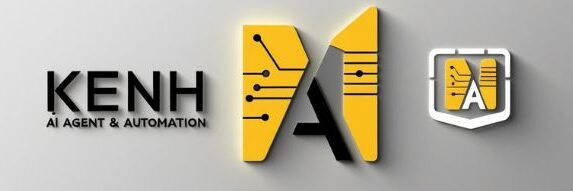The Global AI Race: USA, China, and the Silent Winners
The race for artificial intelligence supremacy has become one of the defining technological competitions of the 21st century. As governments pour billions into research and development, the two primary contenders—the United States and China—dominate headlines.
But beneath the surface, a new breed of “silent winners”—from Europe to Southeast Asia—are redefining AI by building workflow-driven ecosystems, leveraging AI Agents, and deploying MCP (Multi-agent Collaborative Process) frameworks.
This article explores the dynamics behind the global AI race and how emerging technologies like Claude AI, GPT-4.5, and AutoGPT are enabling unexpected players to gain a foothold.
1. The Rise of AI Agents
From Models to Agents
AI Agents are no longer sci-fi. These intelligent digital workers are built on top of powerful foundation models (like GPT-4.5 and Claude AI) and can:
Interpret natural language tasks
Perform autonomous actions
Collaborate with other agents using the MCP framework
Learn from feedback and evolve
The world is shifting from code-driven workflows to agent-driven workforces.
2. USA: The Innovation Powerhouse
The United States has historically led the AI revolution, thanks to:
Massive VC funding in Silicon Valley
A thriving ecosystem of startups like OpenAI, Anthropic, and Replit
Cutting-edge models like GPT-4.5 and Claude AI
Integration of AI into defense, health, and enterprise sectors
Core Advantages:
Open innovation model
Close university–industry ties (Stanford, MIT, Berkeley)
AI agent research leadership (AutoGPT, BabyAGI)
Strategic Focus:
General-purpose models
Agent orchestration systems
Global standards and alignment (e.g., AI safety)
3. China: The Scale and Speed Champion
China has taken a different approach: centralized acceleration. With strategic government directives and massive data access, China focuses on:
Surveillance AI
Ecommerce + finance bots
Industrial automation with AI agents
State-owned research labs competing with private firms
Key Players:
Baidu (Ernie Bot)
Alibaba DAMO
iFlytek
Huawei MindSpore
Strengths:
Scale of deployment
Speed of iteration
Integrated AI + hardware strategy (chips, edge AI)
But due to tight data controls and a focus on internal ecosystems, their agents often lag in multi-lingual generalization compared to Western LLMs.
4. The Silent Winners
While the spotlight shines on giants, other countries are quietly building specialized AI ecosystems that punch above their weight.
🇸🇬 Singapore
A rising AI innovation hub focusing on agent frameworks, financial compliance automation, and AI in smart cities.
Example: MagicLight.ai is pioneering no-code AI agent deployment with built-in MCP orchestration.
🇨🇦 Canada
With leaders like Mila and Vector Institute, Canada is strong in ethical AI, reinforcement learning, and multilingual NLP.
Example: Cohere.ai – offering open-weight LLMs for commercial use.
🇮🇳 India
Rapid growth in AI for healthcare, logistics, and education. India’s strength lies in low-cost agent training datasets, open-source contributions, and remote deployment of AI microservices.
🇫🇮 Finland & 🇩🇪 Germany
Focus on trustworthy AI, autonomous vehicles, and industrial agents using MCP for factory automation.
5. MCP Framework: The Game-Changer
The Multi-agent Collaborative Process (MCP) is becoming the core architectural breakthrough in scaling AI beyond chatbots and single models.
What is MCP?
A system where multiple AI agents:
Have individual roles and goals
Communicate and negotiate tasks
Share context, memory, and feedback
Self-organize around a central mission
🧠 Imagine: Claude AI as the planner, GPT-4.5 as the writer, AutoGPT as the executor, and a custom memory agent for history tracking — all collaborating.
Startups and researchers globally are integrating MCP into:
Content creation workflows
Legal document analysis
DevOps pipelines
Customer service ecosystems
6. Tools Leading the Global Agent Revolution
| Tool | Description |
|---|---|
| Claude AI | Human-like reasoning, ideal for context-aware planning |
| GPT-4.5 | Content generation, ideation, business writing, and multi-domain expertise |
| AutoGPT | Task-oriented agent that self-deploys actions using external tools |
| LangGraph | Open-source orchestration for MCP workflows in production |
| MagicLight | No-code agent platform built on MCP + GPT-4.5 + Claude hybrid |
7. Implications for Businesses and Nations
For Companies:
Adopt AI agents now or fall behind competitors
Focus on modular, reusable workflows
Integrate with open MCP systems to reduce development cost
For Governments:
Invest in MCP-based infrastructure
Prioritize interoperable AI agents in public service delivery
Define ethics and responsibility boundaries early on
8. What the Future Holds
In 2025 and beyond, MCP-driven multi-agent ecosystems will become the operating system of business.
Emails, reports, meetings, and decisions will be agent-managed
Entire startup teams could be simulated by orchestrated agents
LLMs will talk to each other to solve complex tasks collaboratively
The nation or startup that masters this coordination layer will win the next phase of the AI race.
Final Thoughts: It’s Not Just USA vs. China
The real story isn’t a two-player game.
The future belongs to those building smart, collaborative agents, open ecosystems, and deploying AI workflows at scale—be it in New York, Singapore, or Bangalore.
🏁 In the AI race, speed alone doesn’t win. Coordination, ethics, openness, and workflow intelligence matter more.
🚀 Want to experience how MCP and AI agents can automate your business in minutes?
Try MagicLight AI – the world’s easiest way to build smart workflows with Claude, GPT-4.5, and AutoGPT.
